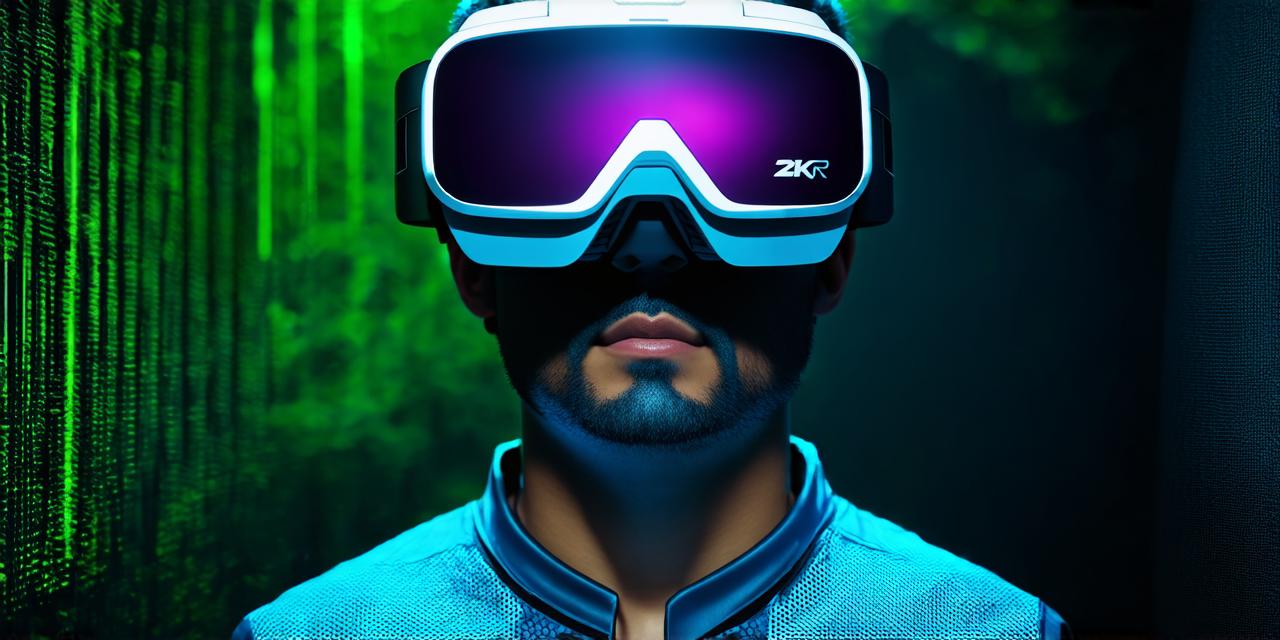Master VR Development in Just 3 Hours: The Ultimate Guide to Creating Immersive Virtual Reality Experiences
Virtual reality (VR) is an exciting and rapidly growing field that has the potential to revolutionize the way we interact with technology. From gaming to education, VR applications are becoming increasingly popular and are poised to have a significant impact on our lives in the future. In this article, we’ll explore how you can master VR development in just 3 hours with our comprehensive course.
Why Learn VR Development?
Virtual reality technology has come a long way in recent years, and it’s now possible to create incredibly immersive experiences that engage users and capture their attention. With the rise of VR applications across a wide range of industries, there is a growing demand for skilled developers who can create engaging and interactive virtual worlds.
If you have a passion for technology and want to learn a new skill that will give you a competitive edge in the job market, learning VR development is an excellent choice. Not only is it a fun and exciting field, but it also has the potential to be highly lucrative.
Our Comprehensive VR Development Course
At our course, we have designed a comprehensive program that will teach you everything you need to know to start creating your own virtual reality applications. Our 3-hour course covers the following topics:
-
Introduction to Virtual Reality
-
Setting Up Your Development Environment
-
Creating Immersive Scenes
-
Implementing Interactive Elements
-
Testing and Deployment
Introduction to Virtual Reality
In this module, we’ll provide an overview of virtual reality technology and explore its history and current state. We’ll also discuss the different types of VR experiences, including 2D, 3D, and 360-degree environments. By the end of this module, you’ll have a solid understanding of what VR is and how it works.
Setting Up Your Development Environment
The next module covers setting up your development environment, which includes installing the necessary software and hardware. We’ll also discuss the different platforms available for VR development, including Unity and Unreal Engine. By the end of this module, you’ll have everything you need to start creating your own virtual reality applications.
Creating Immersive Scenes
In this module, we’ll dive into the process of creating immersive scenes in VR. We’ll cover topics such as lighting, texturing, and environment design. We’ll also explore best practices for creating engaging and interactive environments that keep users engaged. By the end of this module, you’ll have the skills needed to create your own virtual reality scenes.
Implementing Interactive Elements
The next module covers implementing interactive elements in VR applications. This includes topics such as user input, physics simulations, and animation. We’ll also explore best practices for creating intuitive and engaging interactions that enhance the overall user experience. By the end of this module, you’ll have the skills needed to create interactive VR applications that are both fun and functional.
Testing and Deployment
The final module covers testing and deployment of VR applications. This includes topics such as debugging, performance optimization, and publishing your application on various platforms. By the end of this module, you’ll have everything you need to test and deploy your own virtual reality applications.
Real-Life Examples of VR Development
To illustrate the concepts covered in our course, we’ve included several real-life examples of VR development projects. These include:
- Virtual Tours: Companies are now using VR to create immersive virtual tours that allow customers to experience products and services in a whole new way.
- Training Simulators: Medical professionals are using VR to train for real-world scenarios, while pilots are using simulators to practice flying without the risk of accidents.
- Games: VR gaming is becoming increasingly popular, with developers creating immersive and interactive experiences that engage players in ways never thought possible.
FAQs
Q: What software do I need to start developing VR applications?
A: You’ll need a development environment such as Unity or Unreal Engine.
Q: Do I need any prior experience with programming?
A: While some programming knowledge can be helpful, our course is designed for beginners and includes step-by-step instructions.
Q: Can I develop VR applications on my own?
A: Yes, with our comprehensive course, you’ll have everything you need to start creating your own virtual reality applications.
Q: What are the best practices for creating immersive VR environments?
A: Our course covers best practices for creating engaging and interactive environments that keep users engaged.
Summary
Virtual reality technology is an exciting and rapidly growing field, with endless opportunities for creative expression and innovation. By mastering VR development in just 3 hours with our comprehensive course, you’ll have the skills needed to create engaging and immersive virtual reality experiences that captivate users and enhance their overall experience.
